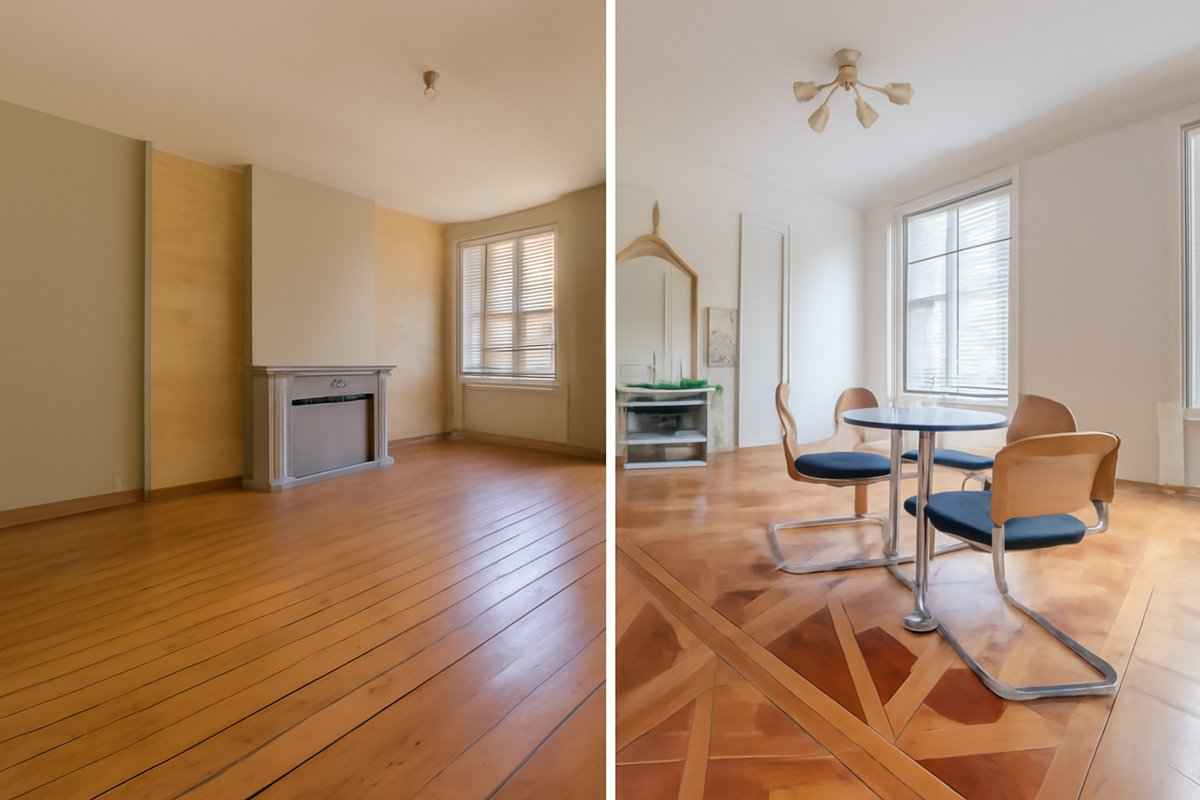2020-02-17
Free life and busy life annuities
Barnes helps you understand the main differences between free and busy life when buying or selling

Life annuity principles
The life annuity is a real estate transaction which consists in buying a property by paying a first capital called bouquet, followed by an annuity paid to the seller until the end of his life. In a life sale, the buyer is called the annuitant, and the seller is called the annuitant. For the buyer, the advantage of the transaction is to be able to buy a property without paying the full amount of the sale at the time of acquisition. For a seller, selling life is a way of securing a monthly annuity for life.
Two forms of life annuity exist: free life annuity and occupied life annuity. The operation which consists in buying a life annuity by being able to immediately enjoy the property, not occupied by the seller, is called free life. The life annuity purchase transaction in which the seller continues to occupy his property for the rest of his life is called life annuity. Both types of life annuity have their advantages. Barnes offers you a decryption.
The occupied life annuity in outline
As part of an occupied life annuity, the seller remains living in the accommodation. This is the most common form of life contract. The sale takes place on bare property, that is to say the property without the right of use and habitation, which is kept by the annuitant. The enjoyment of the property returns to the annuitant on the death of the seller.
In some cases, the seller gives up his right of use after a period of occupation of the accommodation to, for example, integrate a retirement or health home.
The advantages of a life annuity have the advantage of guaranteeing a roof for life for the seller, and allowing the buyer to benefit from a discount for occupancy. This discount is higher the younger the seller, and vice versa. The life annuity is the least expensive option for the buyer.
Understanding free life
The sale in free life consists of a sale in full ownership, that is to say at the same time of the bare ownership and the usufruct. The property is immediately available to the purchaser on the day the sale is signed. As in the case of a life annuity, the payment of the annuity to the seller ends on his death.
The enjoyment of the property allows the buyer to live in the accommodation as well as to rent or resell it. The annuitant therefore does not benefit from the discount system at work in the occupied life annuity, which can, depending on the case, rise from 25 to 50% of the price of the property.
The distribution of taxes and charges according to the type of life annuity
Who is responsible for the charges in the case of a life annuity?
The occupied life contract provides for a distribution of charges and taxes between the buyer and the seller. The exact terms of this distribution can be agreed amicably between the two parties.
It is generally customary for the annuitant seller who continues to occupy the accommodation to keep so-called rental charges, that is to say his consumption of water and electricity, home insurance, taxes for the removal of household waste, as well as routine maintenance and small repairs.
The recipient of the debtor therefore has to bear the cost of co-ownership if necessary (fees of the trustee, building insurance and co-ownership work), structural work such as repairing the roof or renovating the facade, and property tax with deduction of household waste.
Who is responsible for the charges in the case of free life annuity?
Since in the case of a free life annuity, the seller no longer occupies the property and both usufruct and bare ownership revert to the buyer, the seller is completely relieved of the management of the property from the signing of the life contract.
The annuitant who buys the property can occupy it or rent it out immediately: this also means that he assumes all of the charges, as in the case of a conventional sale.
The annuitant may transfer the rental charges to the possible occupant of the accommodation if he decides to rent it. Otherwise, he will assume all taxes, fees and rental charges for the property.
Bouquet and annuity rates in free life and occupied life
The bouquet, as the sum of contribution paid to the annuitant at the time of signing the life contract, generally represents 20 to 30% of the value of the property, whether it is a free life contract or busy. The amount of the life annuity is then calculated on the total sale price deducted from the bouquet. The contribution of the bouquet is a use and not a legal obligation.
The amount of the life annuity is calculated on the basis of the annuitant's life expectancy, referring to the INSEE mortality tables for life annuities.
In the case of an occupied life annuity, a discount must be applied to the price of the property. Inversely proportional to the age of the selling annuitant, the reduction can reach, for information, 30% for a 90-year-old seller and 50% for a 70-year-old seller.
In the case of a free life annuity, no discount is applied.
Tax rules for free and busy life
The taxation of the life annuity follows specific rules: only part of the annuity received by the annuitant is subject to income tax. The taxable share depends on the age of the seller at the time of signing the contract. The older the seller is at the time of the sale, the greater the exempt portion of his rent. As an indication, the taxable part of the annuity will be 70% for a seller under 50 years old, between 40 to 50% for a seller from 50 to 69 years old, and only 30% from 70 years old.
The payment of the annuity does not however bring any tax advantage to the purchaser, whether the contract is that of a free life annuity or an occupied life annuity.
Capital gains tax exemption cases for the annuitant
The annuitant may be exempt from capital gains tax if the property sold for life is his principal residence. If it is a second home, the seller is exempt from capital gains tax if he has owned the property for at least 30 years.
The tax on real estate wealth in the context of free or occupied life
The annuitant is not required to declare the amount corresponding to his annuities within the framework of the IFI (property wealth tax). In the case of an occupied life annuity, he must however declare the occupation value of the property concerned. The share of usufruct value and that of bare ownership changes according to the age of the usufructuary, from a ratio of 90% to 10% for a usufructuary of less than 21 years until the inverse ratio of 10% and 90% for a usufructuary over 90 years old.
On the side of the annuitant purchaser: the bare ownership of the property must be declared in the case of an occupied life annuity, with the possibility of deducting the part of the capital which represents the rent. In the case of a free life annuity, the buyer declares to the IFI the full value of the property. The capitalization value of the annuity paid is to be included in the deductible liability.
Go from busy life to free life
The annuitant of an occupied life annuitant can vacate the accommodation and renounce his right of use and habitation, effectively transforming the occupied life annuity into a free life annuity. This clause of abandonment of enjoyment must appear in the act, with the precision of the amount of increase in the pension if the case arises. It is customary that this increase, which corresponds to a redemption of the usufruct by the annuitant, represents 30% of the rent.
Assessment: the advantages and disadvantages of the two types of life annuity
The busy life annuity
The advantages in favor of the annuitant seller are to be able to continue to live in their accommodation, and therefore to have a roof for life, while receiving a regular annuity; to no longer pay property tax, the trustee, and any major work on the building. He has full freedom to switch to a free life thereafter. Fiscal advantages are also notable: the exemption from the bouquet and the reduction of 70% of the taxation of the annuity from the age of 70 years.
Among the few drawbacks that the seller of an occupied life annuity can face are the inability to rent his property and the obligation to assume rental charges.
On the side of the annuitant purchaser, the occupied life annuity is an advantageous solution in the sense that it allows to benefit from a sometimes very significant discount compared to the price of the real estate market. The management and maintenance of the accommodation is not their responsibility. Resale is possible at any time.
The drawbacks lie in the impossibility of enjoying the accommodation while the seller is alive. Uncertainty about the duration of payment of the pension also runs the risk of a less advantageous business than expected from a financial point of view. The buyer also bears bare ownership charges, as well as the property tax.
The free life annuity
In the context of a free life, the seller benefits from a more attractive selling price. The life annuity will be notably higher, since no occupancy discount is applied. The tax allowance on the life annuity can go up to 70% of the amount of the annuity depending on the age of the annuitant. The seller is also fully released from the charges and taxes of the property concerned.
Of course, the sale in free life implies an irremediable loss of enjoyment, as in the case of a classic real estate sale. This is why it is often preferred the sale in busy life annuity.
On the buyer's side, the advantages of free life are multiple: we will retain the enjoyment of the immediate property which includes the possibility of renting it, or even the possibility of avoiding the costly use of a bank loan thanks to life annuity.
Among the drawbacks are the scarcity of life annuity sales proposals. Very often, the offers relate to small areas, less required


